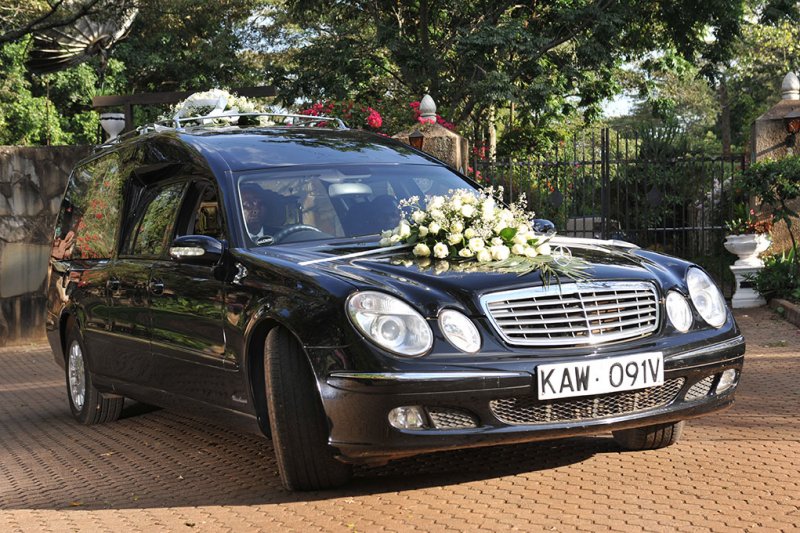Funeral parlours were unheard until 1988 all because a former Attorney General could not imagine his body refrigerated next to victims of mob justice…
By Camy Akinyi-Gecaga
Contributing Editor
The City Mortuary is not a place you can try dating a mourner while waiting to collect your stiff. It has no cafeteria. The sitting area outside comprises random blocks of stones. There are very few areas to shield when it starts raining. Worse of all, it has one entrance which is also the exit.
You see mourners lumbering in like they’re being pushed by invisible, ancestral hands from behind. Most have red eyes. Minutes later, half of them are wailing while escorting the hearses carrying their loved one.
Mortuaries, be they funeral homes or not, are great equalizers: The chicken thief, the victim of mob justice, the one knocked down by a speeding car, the fornicator killed by an irate hubby, the virgin and the pastor all end up with cotton stuffed in their mouths, laying refrigerated side by side at the morgue.
Mortuaries in Kenya are macabre places for the living though. Most are windowless with corridors resembling abandoned, hastily cleaned abattoirs. They are very funereal, what with the grey, death-centred colour regimes?
Which is rather sad of mortuaries, considering some hospitals in Kenya now have lounges and eateries with only the swimming pool and well-stocked bar missing in action. One high-end hospital in Nairobi even has an Executive Wing, which is not for the sick of body, but rather, for the honchos suffering ‘executive stress’ and which is where they go to recuperate complete with a kitchenette and garden: You can go visiting a convalescing captain of industry and end up getting high like a kite while sampling the virtues of a Singleton in the cabinet.
The one man who took mortuaries a notch higher was John Lee of the Lee Funeral Home inside the Nairobi Hospital. Before it was established, the rich and famous were all stored at the City Mortuary. There were no funeral homes or parlous when JM Kariuki died in 1975. He was a millionaire many times over, but when he was assassinated that March, it was to the City Mortuary where his family went to identify him.
President Mzee Jomo Kenyatta was also taken to City Mortuary for “cleaning up”
Mzee Jomo Kenyatta, the founding President, died in 1978, but has had several ‘check-ups’ considering he was not buried and is still kept under military at the Mausoleum inside Parliament Buildings. His embalming often needs a retouch, a change of clothes too during his Memorials marked every August 22.
Mzee Jomo Kenyatta was often taken to the City Mortuary under military guard for “professional care” by his former personal physician Dr Eric Mngola, who was also the Director of Medical Services at the time. The trip to the City Mortuary also involved “cleaning up” Mzee Jomo Kenyatta in the dead of night as Lt-General Daniel Opande recalls in his recently published memoirs, In Pursuit of Peace in Africa.
Lt-General Opande was the military staffer responsible for ceremonies and he recalls: “We entered the mausoleum and with the help of a handful of soldiers set out to take out the casket. It was quite heavy and tricky to remove but we managed to bring it out successfully. It was immediately transferred to the waiting military ambulance for the journey to the City Mortuary.”
It was also at the City Mortuary where the body of famed criminal lawyer S.M. Otieno lay for five months in 1987 as his widow, the late Wambui Otieno, battled her husband’s clan in court over where to bury him.
SM Otieno had declared his wishes to be buried at his six-acre farm in Upper Matasia, Ngong, but his Umira Kager clan insisted a dead Luo’s body belonged to the clan which decreed he be buried at his rural home in Nyalgunga, Siaya County. The City Mortuary was even nicknamed ‘Stage ya SM” by matatu crew which dropped passengers in nearby bus stops. The Umira Kager clan won.
The SM Otieno burial dispute made Attorney General Charles Njonjo shiver
The court battle for S.M. Otieno’s body so made former Attorney General Charles Njonjo-who turned 100 years in January 2020-shiver at what would happen if he dropped dead and was taken to the City Mortuary. He and others often approached John Lee to establish a Funeral Home fit for Kenya’s upper classes “since we don’t want to be taken there ourselves.”
Charles Njonjo, a homespun aristocrat, was then the Chairman of Nairobi Hospital. John Lee, born and educated in Kenya, had gained experience at the Coroner’s Office dealing with pathologists and undertakers at the Addenbrooke’s Hospital in Cambridge and Njonjo decided he was the man start Kenya’s first funeral parlour on the grounds of Nairobi Hospital. That was in 1987. Lee Funeral Home was opened the following year “to offer first class service to the bereaved” and has since been the choice for the stiffs of Kenya’s Who’s Who.
The portrait of Charles Njonjo hangs at the reception and Lee is happy many other funeral homes sprung all over Kenya lifting the hearse off his back “since I did not want to be overloaded like the City Council.”
In fact, some mortuaries are changing the game.
Take the ‘five star’ General Kago Funeral Home in Thika. It has modern cold rooms, parking for 100 cars but mourners have to stay outside instead of inside watching Silence of the Lambs on giant screens. After all, it cost Sh300 million to construct. Okay, at least it has a touch of yellow on the outside. Funny thing is, the Sh300 million is what it costs the Nairobi County Government to run City Mortuary against a revenue of Sh30 million according to former Governor Dr Evans Kidero in 2013.
Indeed, something should be done by our architects regarding the deathly design of Kenyan mortuaries. Give them some life please as Gloria Kimetto argues in her 2010 research, Design of a Mortuary Facility, at the School of Architecture and the Built Environment at the University of Nairobi.
Among the few godsend mortuaries include the Kenyatta University Funeral Home
A good mortuary should consider location, for instance. Most mortuaries in Kenya are buried smack by the road side: The City Mortuary, Chiromo and Montezuma Monalisa and Umash Funeral Homes are constant reminders of one’s mortality by virtue of their location along Mbagathi, Valley Road and Ngong Road inter-sections.
Among the few mortuaries which were godsend include the Kenyatta University Mortuary. No, wait a minute, I think it’s a Funeral Home. It is located inside the campus along the Thika Superhighway, a major artery for our brothers and sisters who use it on their way to their rural homes in Murang’a, Kiambu, Nyeri and the larger Mt Kenya region.
By its location, Kenyatta University Funeral Home saved the people from Central Kenya the agony of jamming city centre roads in lorries, matatus and Pickups sporting red ribbons, passengers on wooden benches as they headed to Umash, City or Chiromo mortuaries.
Kenyatta University has gone several steps up. Its funeral home has a chapel that can sit 100 and a viewing bay. It also has spacious green grounds with appropriate shrubbery, a gazebo like sitting areas, hotel like lounges and ample parking. It also has a flower shop and a canteen!
Gloria Kimetto adds that a mortuary should also consider circulation (of air and people), privacy, security, lighting, ventilation, materials, waste management and open spaces and gardens.
The staff, mourners, body delivery and body collection points are serviced by one entry
“Conflict in circulation is evident in Kenyatta Hospital Mortuary and City Mortuary. In both, the staff, mourners, body delivery and body collection points are serviced by one entry,” she notes, adding that both facilities lack privacy, have poorly done interiors besides absence of waiting areas for the bereaved.
The wanting ventilation at the City Mortuary for instance, can chock one to death which can be speeded up by stench smell from the bodies. Complaints to the Medical Officer of Health at the County six years ago were to the effect that cold room machines were so 19th century and only four of 14 were working. The breakdowns were pegged on overload and were not maintained for up to a year. Handles to cold air leakages were broken, doors worn out and temperature regulation a challenge due to lack of rubbers.
Gloria notes that most hardly considers use of external spaces in mortuary design since places like Chiromo, which prides itself as a Funeral Parlour has a larger part of its external space reserved for parking and “this creates a heat island and leaves little space for soft landscaping.”


Hi i’m a student architect, is it possible for the author to assist me with Gloria Kimetto’s research, “Design of a Mortuary Facility”, of which has been referenced to within the article?
Hi,
Thanks for reading. Kindly get it online.
Regards